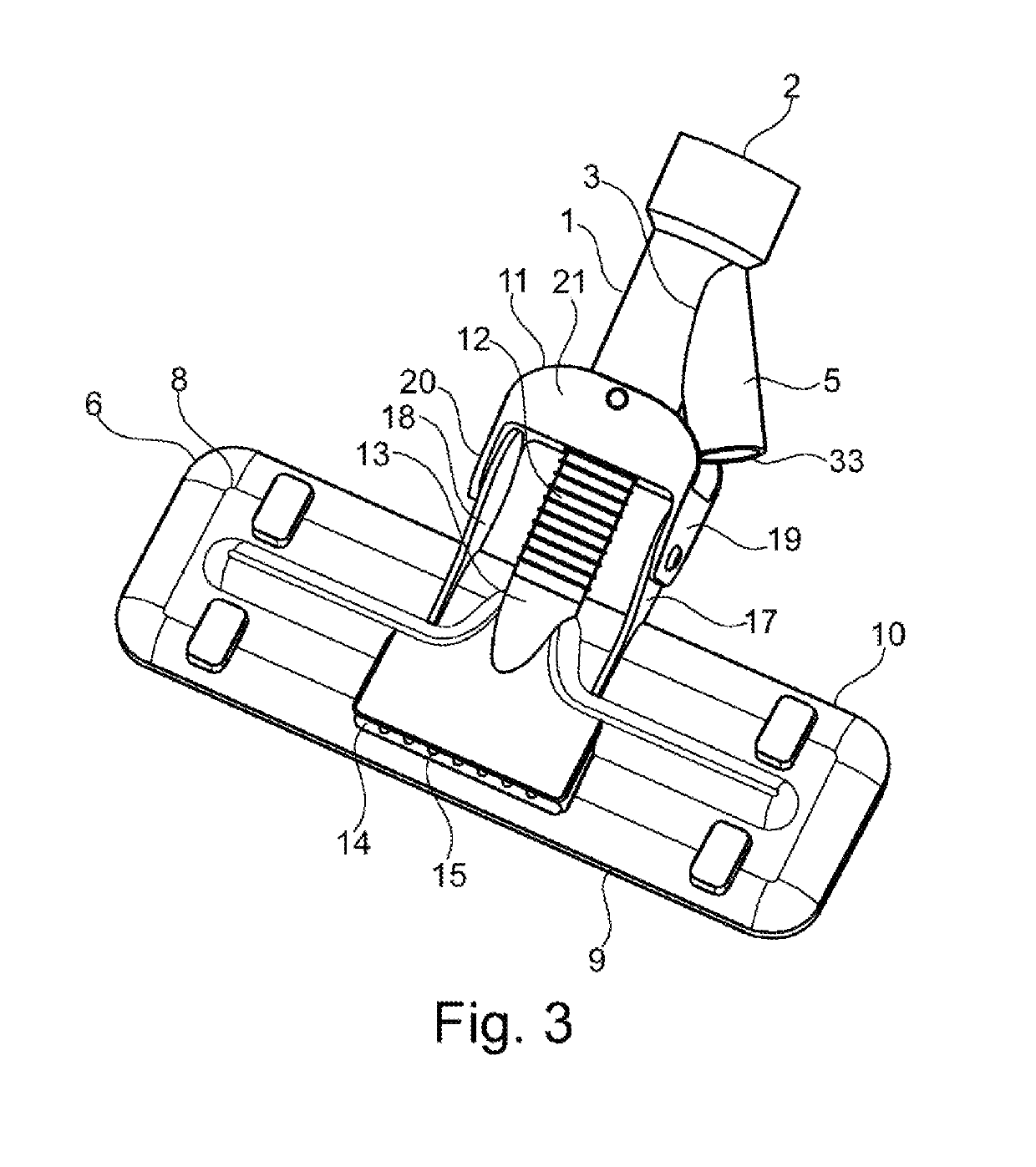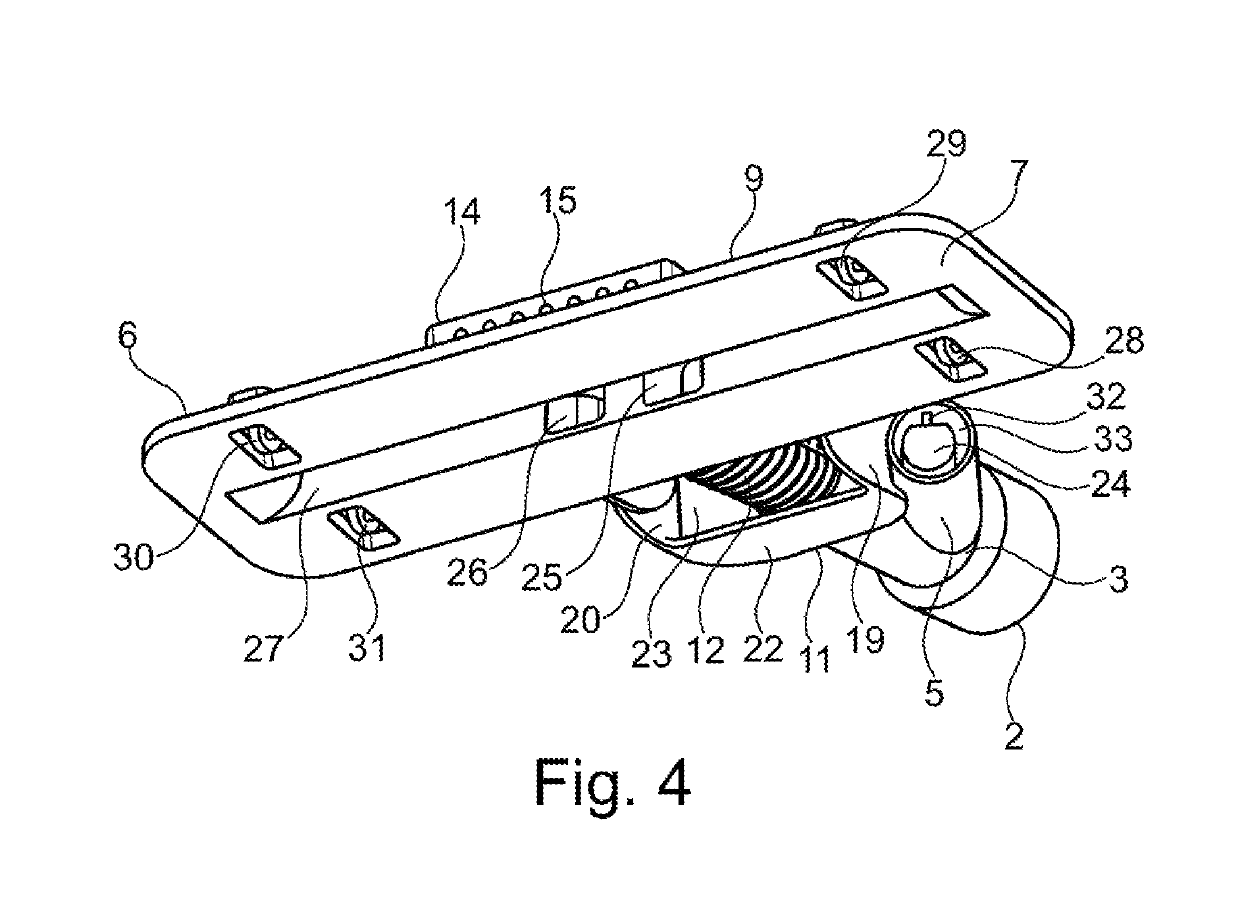Electricity producing flexible and slim nozzle for being releasably connected to a suction source of a vacuum cleaner
a technology of electric power generation and suction source, which is applied in the direction of suction nozzles, electric equipment installation, cleaning equipment, etc., can solve the problems of reducing the efficiency of electricity generation, obstructing the rotation of the fan, and total stop of electricity generation,
- Summary
- Abstract
- Description
- Claims
- Application Information
AI Technical Summary
Benefits of technology
Problems solved by technology
Method used
Image
Examples
Embodiment Construction
[0059]There is a complex of problems associated with the nozzles described in prior art documents. Hence, the aim of the present invention is to eliminate said complex of problems.
[0060]Referring to FIGS. 1-4, a nozzle according to a specific example of the present invention comprises a nozzle tube 1, a slim nozzle head 6, a flexible joint 11, a flexible conduit 12, a light source 14 and a power generation device 16.
[0061]The nozzle tube 1 has an upper opening 2, a side opening 3 and a lower opening 4. The upper opening 2 is configured to be connected to a suction source of a vacuum cleaner. A suction source may be an extension tube (from now on referred to as a tube), pipe union, hose or any other conduit for connecting a nozzle with the vacuum generation unit of a vacuum cleaner. The upper opening 2 of the nozzle tube 1 may be configured as a connection having 2-5 different diameters for being fitted with a variety of suction source tubes having different diameters.
[0062]The heigh...
PUM
 Login to View More
Login to View More Abstract
Description
Claims
Application Information
 Login to View More
Login to View More - R&D
- Intellectual Property
- Life Sciences
- Materials
- Tech Scout
- Unparalleled Data Quality
- Higher Quality Content
- 60% Fewer Hallucinations
Browse by: Latest US Patents, China's latest patents, Technical Efficacy Thesaurus, Application Domain, Technology Topic, Popular Technical Reports.
© 2025 PatSnap. All rights reserved.Legal|Privacy policy|Modern Slavery Act Transparency Statement|Sitemap|About US| Contact US: help@patsnap.com



